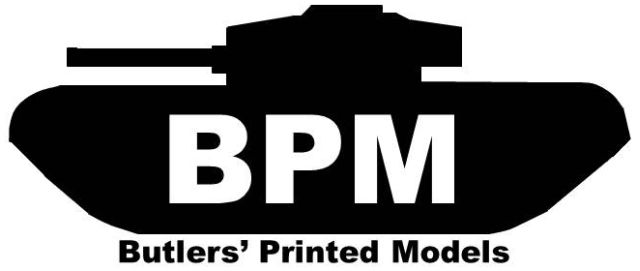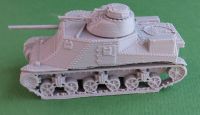Blog
We have recently switched to using a recycled plastic so now seemed to be a good time to provide some information about the sustainability of our models.
You can read all about it on the Sustainability page
***********************************************************************************************************************************************************
Stalingrad
NOTE, there is a long ish explanation that is all text to begin with and then loads of pictures at the end. If you just want pictures scroll down!
In November I organised a big WW2 game to refight the battle of Stalingrad. The game used FOW rules and involved 6 players on each side plus 2 umpires. (The game was planned for 7 a side but we only had 6 in the end so the games on Mamayev Kurgan hill were removed although this may have been a good thing as I don’t think they would have been very interesting)
The game was played over two days. Saturday morning involved a small game to get everyone used to the rules (most players were not regular FOW players). Saturday afternoon involved a normal sized game and finally the Sunday game took all day.
The game was 20 feet long and 6 foot wide, although the buildings only cover the central 4 foot of table width.
This game took 3 years to organise and prepare for. I had to buy and paint 2 and half Russian infantry armies because I didn’t own any when I conceived this game!
All of the terrain was built from scratch. The buildings are made from 5mm thick foam board on a wooden base. The foam board building is painted in a sand and PVA mixture to give it some texture and then painted grey and highlighted white. Bullet holes were painted black. I could have put a lot of extra detail into the buildings but it would have added a lot of extra time. As it was it took over 14 months to create the buildings.
I did add some extra detail, most buildings have debris created from off cuts of foam board but in addition to that there were many 3D printed features. Many of the buildings have stairs, there are chimneys, bread ovens, landing stages a red October sign in Russian, inside the grain elevator there are some conveyor belts. The large oil tanks are probably the biggest feature. All of the craters are 3D printed and then textured in sand and glue as are many garden walls.
(Most of the 3D printed terrain features used in the game are available to purchase).
Obviously the whole of the city could not be created in 15 mm scale so I created many of the key features that were most important in the battle and put them together. The main features of the table starting at the north east end. Oil tanks representing the end of the city industrial area, workers houses that were burnt down, a whole factory complex that represented the tractor factory, Barrikady factory and Red October factory at various times during the weekend. The bread factory, the last landing stage retained by the Russians, Mamayev Kurgan hill, Pavlov’s house, Central train station and finally the grain elevator.
I tried to create the buildings in such a way that they could all be played in but look like a city without worrying too much about historical accuracy.
The figures used in the game came from myself and several of the players. As I said above my Russians were bought and painted especially for this game so I painted the bases grey instead of green to match the boards. I also added city features to their bases, craters, boxes, barrels and little wall sections (all 3D printed). Two of the bases included something grander, a medium infantry base and small observer base actually have a two story building as part of the base. All the extra bits were 3D printed of course (and are now available to purchase).
So onto the game
The game represented the battle for the city itself from 13th of September when Paulus launched his first main attack into the city, and for the 2 months that followed. In simple terms the battle can be split into two halves. The first month of attacks onto the south western end and the second month on the north eastern industrial end. I needed everyone to be playing at the same time so the two months of the battle were fought simultaneously at each of the table.
Saturday morning represented initial attacks into the city at both ends of the table, then Saturday afternoon represented the Germans capturing the bulk of the city at each end and then Sunday represented the last days of Russian resistance as they clung on and counterattacked where possible to disrupt the Germans.
More or less each player was paired off with an opponent and played there own game with only a small amount of interaction to each side. Each scenario that a pair played represented a particular day of the whole battle. So each pair was playing a different day of the battle to everyone else. This was necessary to have everyone playing at the same time and worked out well.
All the scenarios were specially designed for the game and were not even sided games. Often one side had many more “points” if you were to add up the points (which I didn’t).
PICTURES
Set up, no figures yet - Factory end
Set up, no figures yet, railway station end
Set up, landing stage in the factory area
Set up - the factory
Set up - notice all the burnt down workers houses
Set up - grain elevator in the foreground
Saturday AM start in the factory district
Saturday AM start at the north western end - Grain elevator clearly visible
Saturday PM start
Saturday PM start
Saturday PM start, central train station
Saturday PM start, grain elevator
Saturday PM attacks - Factory area
Saturday PM attacks factory area
Saturday PM attacks northern end
Saturday PM defence, Russians in the factory
Saturday PM, Russian defence, bread factory
Sunday start - big Russian push to retake the final landing stage - fail here and the city falls!
Sunday start - Germans have outflanked the Barrikady factory
Sunday - Last German defence of the landing stage
Sunday - Russian counter attack on the central station
Sunday Russain counter attack still looks strong but it stalls in the end
Sunday - Russian defence of the Barrikady factory and surrounding area
Sunday - finish
Sunday - Finish
Sunday - Finish
Trophies - awarded for various spurious and unconvincing reasons







The rules in brief
FOG-AM RULES
The competition will feature two periods: (1) Classical (500 BC to 500 AD), any book; (2) Medieval (post 1040 AD), any book.
the competition will be run on a league basis, with the top four finishers playing off in two semi finals (1st v 4th; 2nd v 3rd) and the winners of these meeting in a grand final.
As last year, players must pick 1,000 points of troops (in order of march) from their list and but this year use any 750 points from this per game (except for the semi-finals & final).
Units from the 1,000 points can be broken down or combined to make up the required total. This must still comply with army list restrictions.
This will allow slight variation of forces for each opponent.
Table size will be 5' x 4' with three and a half hours per game,
The semi-finals & final will be 1,000 points, 8’ x 4’ table and of five hours play
In Medieval I will be using Wars of the Roses Yorkist Pretender from the Storm of Arrows book
In Classical I will be using Hephthalite Hunnic from the Legions Triumphant book






























